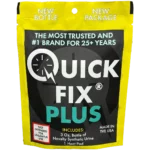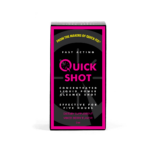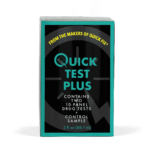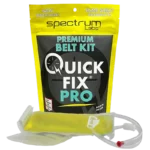Urine Testing: Unraveling the Facts and Fiction
Urine testing, a standard method for assessing various health parameters and detecting substances, has been shrouded in a cloud of both fact and fiction. As a tool for medical diagnosis, drug testing, and even monitoring hydration levels, it’s essential to understand the truth behind urine testing to dispel myths and misinformation. In this article, we will unravel the facts and fiction surrounding urine testing.
The Multifaceted Nature of Urine Testing
Fact: Urine Testing is a Valuable Diagnostic Tool
Fiction: Urine testing is only for drug screening.
Fact: While drug testing is a well-known application, urine testing serves a much broader purpose in medicine. It is a non-invasive method that can provide vital information about various health conditions, such as diabetes, kidney function, and urinary tract infections. In fact, urine analysis is one of the oldest medical diagnostic tools, dating back thousands of years.
The analysis of urine, known as urinalysis, is a powerful diagnostic tool for healthcare professionals. It provides insights into a person’s health, and urine samples can reveal a wide range of information, including the presence of certain diseases, imbalances in the body, and indicators of overall well-being.
For example, urinalysis can help diagnose diabetes. In uncontrolled diabetes, the body may excrete excess glucose into the urine, which can be detected through a simple urine test. Similarly, abnormalities in kidney function can be identified through elevated levels of specific substances in the urine. Moreover, urinary tract infections can be diagnosed by bacteria and white blood cells in the urine.
However, urine testing is not limited to medical diagnostics. It is also employed in employment and sports, where drug tests are routinely administered to ensure compliance with anti-doping regulations and workplace policies.
Fiction: All Urine is the Same
Fact: The color, composition, and smell of urine can vary significantly from person to person and throughout the day. Factors such as diet, hydration, medications, and health conditions can influence the appearance and chemical composition of urine.
It’s a common misconception that all urine is uniform in color, odor, and composition. In reality, there is a wide range of normal variations in the characteristics of urine.
Color: Urine color can vary from pale yellow to dark amber. The color is primarily determined by the concentration of a pigment called urochrome, a breakdown product of hemoglobin. A lighter color often indicates proper hydration, while dark yellow or amber urine may suggest dehydration.
Odor: The smell of urine can be influenced by several factors, including diet, medications, and certain health conditions. For instance, consuming foods like asparagus or coffee can cause a distinct odor in urine. Infections, such as urinary tract infections, can also lead to foul-smelling urine.
Composition: The chemical composition of urine is complex and can vary due to diet, medications, and individual health. Urine comprises water, urea, creatinine, electrolytes, and waste products. Any significant deviation from the normal composition may signal an underlying health issue.
Understanding these variations is essential for both individuals and healthcare professionals. Monitoring changes in urine characteristics can offer valuable insights into hydration status, dietary habits, and potential health concerns.
Fiction: Drinking Water Dilutes Urine for Drug Tests
Fact: While consuming excess water can dilute the concentration of drugs or metabolites in the urine, modern drug tests have measures to detect dilution. These tests assess factors like creatinine levels and specific gravity to determine if the sample has been tampered with. Dilution is not a guaranteed way to pass a drug test.
The belief that drinking copious amounts of water before a drug test can lead to a negative result is a common misconception, but it’s not entirely accurate. While excessive water consumption can temporarily dilute the concentration of drugs or their metabolites in the urine, modern drug tests have evolved to detect such attempts at adulteration. Discover how our Quick Fix Plus Synthetic Urine performs for these home tests.
Drug testing laboratories employ various methods to assess the integrity of a urine sample and identify signs of dilution. Two key indicators that laboratories analyze are creatinine levels and specific gravity:
1. Creatinine Levels: Creatinine is a waste product muscle metabolism generates. In a typical urine sample, creatinine levels remain relatively stable. When a person drinks excessive water to dilute their urine, creatinine levels drop significantly. This drop is a red flag for labs, indicating possible tampering.
2. Specific Gravity: Specific gravity measures the concentration of solutes in the urine, including salts, sugars, and other substances. Diluted urine has a lower specific gravity compared to concentrated urine. Labs use specific gravity measurements to identify samples that have been excessively diluted.
To ensure the integrity of drug tests, it’s crucial to follow proper guidelines and avoid attempts to dilute urine intentionally. Modern testing methods are designed to detect such practices, and attempting to cheat a drug test can have legal and professional consequences.
3. How Do Drug Tests Measure Specific Gravity and Creatinine Levels to Detect Urine Tampering:
Drug tests use specific gravity and creatinine levels to detect urine tampering. Specific gravity is a measure of urine concentration, often measured using a refractometer or reagent strips. Creatinine, a waste product from muscle metabolism, is consistently present in urine.
Attempts to cheat drug tests usually involve dilution through excessive water consumption. Dilution leads to lower specific gravity and creatinine levels in the urine. Laboratories set cut-off values for these parameters. Samples falling outside these ranges are flagged for further scrutiny.
Confirmation testing, typically involving mass spectrometry, is performed on flagged samples to verify tampering. This process ensures the accuracy and reliability of drug testing.
Fiction: Urine is Sterile
Fact: While urine is generally free from bacteria and viruses, it is not entirely sterile. Microbes can sometimes be present in the urethra and can be introduced during the collection process. Urine collected for laboratory testing typically goes through a sterilization process before analysis.
The idea that urine is entirely sterile is a common misconception. While urine is typically free from harmful bacteria and viruses, it is not entirely devoid of microorganisms.
In a healthy urinary system, the kidneys filter waste and excess substances from the blood, which are then excreted as urine. However, the urinary tract, including the urethra, is not always wholly microorganisms-free. Some non-pathogenic bacteria, like Lactobacillus, can reside in the urethra and bladder without causing infection.
Furthermore, the collection process itself may introduce microorganisms into the urine sample. The external urethral meatus (the urethra opening) and the surrounding genital area can harbor bacteria. During collection, especially in an unsterile environment, some of these bacteria may enter the urine sample.
It’s important to note that urine collected for laboratory testing is typically processed in a way that eliminates any potential contamination. The samples undergo a sterilization procedure to ensure that non-pathogenic microorganisms do not compromise the results.
Fiction: The Smell of Urine is Irrelevant
Fact: The odor of urine can provide valuable information about a person’s health. For example, a strong, sweet odor might indicate uncontrolled diabetes. At the same time, a foul smell could be a sign of a urinary tract infection. Changes in odor can signal underlying health issues.
The smell of urine can be more than just an inconvenience; it can be a valuable diagnostic tool. Changes in the odor of urine can signal various health conditions.
1. Sweet or Fruity Odor: A sweet or fruity odor in urine might indicate uncontrolled diabetes. When blood sugar levels are too high, the body may excrete excess sugar into the urine, creating a distinctive odor.
2. Foul or Ammonia-Like Odor: A foul-smelling or ammonia-like odor can indicate a urinary tract infection (UTI). UTIs are often accompanied by symptoms
Fiction: All Drug Tests are Infallible
Fact: Drug and urine tests are not immune to errors and false results. Factors like cross-reactivity with over-the-counter medications, human error in sample collection, and laboratory mistakes can lead to false-positive or false-negative results.
Fiction: Creatine Supplements Help Beat Drug Tests
Fact: Creatine supplements are sometimes thought to mask the dilution of urine that occurs when someone drinks excessive water to try and pass a drug test. However, the effectiveness of creatine in this regard is debated, and drug tests have become more sophisticated in detecting dilution.
Fiction: Drinking a Lot of Water is Always Healthy
Fact: While hydration is vital for overall health, overhydration can lead to a condition called water intoxication, which can be life-threatening. Drinking excessive amounts of water can disrupt the balance of electrolytes in the body and dilute essential nutrients.
Fiction: Urine Color is the Best Indicator of Hydration
Fact: While urine color can provide some insight into hydration, it is not the sole indicator. Thirst, the frequency of urination, and the specific circumstances (e.g., hot weather or exercise) should also be considered when assessing hydration levels.
In conclusion, urine testing is a versatile and valuable diagnostic tool beyond drug testing. However, it is crucial to separate fact from fiction when discussing this topic. While some myths persist, understanding the science and limitations of urine testing can help individuals make informed decisions regarding their health and well-being. Whether for medical diagnosis or drug screening, accurate information is essential to ensure the best possible outcomes.
Fiction: Drinking Water Before a Drug Test Only Dilutes the Urine
Fact: Drinking water before a drug test can impact the results by diluting the concentration of drugs or metabolites in the urine, making it more challenging to detect substances. However, the influence is not limited to dilution. It can also temporarily lower creatinine levels specific gravity, and affect sample volume. These effects can raise suspicion during drug testing. Laboratories and testing facilities have measures to identify tampering or dilution attempts. Attempting to manipulate a drug test by drinking excessive water is not a reliable strategy.
Try using our Quick Test Plus Home Test Kit to help discover what’s in your urine.
-
 Quick Fix® Plus 6.4 Synthetic Urine 3 OunceFrom $31.95
Quick Fix® Plus 6.4 Synthetic Urine 3 OunceFrom $31.95 -
 Quick Shot – Mixed Berry$21.95
Quick Shot – Mixed Berry$21.95 -
 Quick Test Plus Home Test Kit (w/Control)$39.95
Quick Test Plus Home Test Kit (w/Control)$39.95 -
 Quick Fix® Pro Belt Kit 4 OunceFrom $47.95
Quick Fix® Pro Belt Kit 4 OunceFrom $47.95